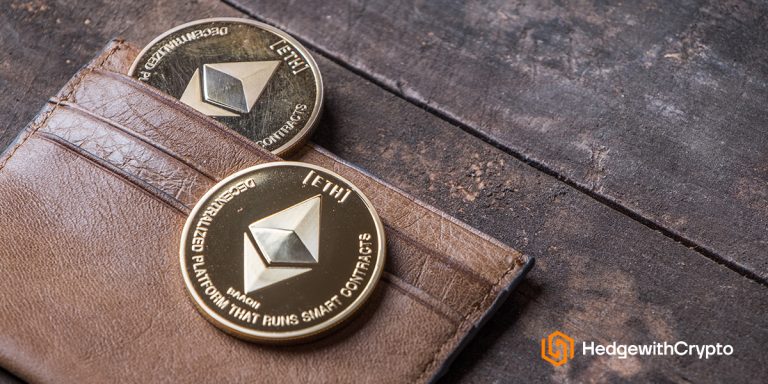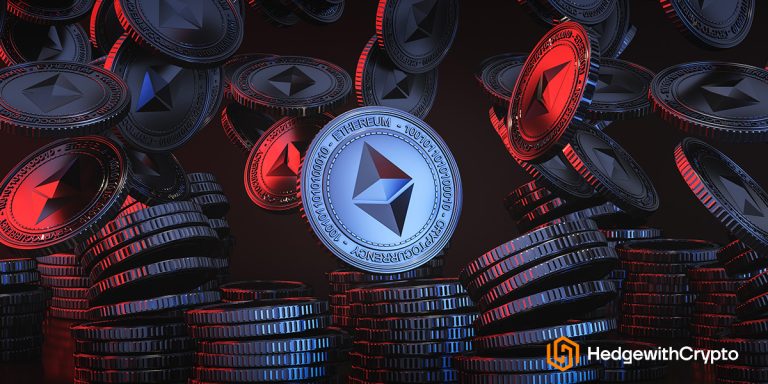These Are The Differences Between Solana and Ethereum
Key Takeaways:
- Compared to Solana, the Ethereum blockchain is a more secure network due to its level of decentralization.
- Solana offers near-instant transaction speeds, while Ethereum has slower transaction speeds, averaging up to 5 minutes.
- Generally, Solana gas fees are significantly cheaper than those on the Ethereum network.
TABLE OF CONTENTS
The battle between layer-1 blockchains has never been fiercer. Ethereum has enjoyed a first-mover advantage since its launch in 2015; however, its inability to scale has allowed other layer-1 blockchains, such as Solana, to capture market share throughout 2021.
While Ethereum was the network that facilitated the DeFi summer of 2020, Solana witnessed a meteoric rise in adoption during 2021 as decentralized application (dApp) developers transitioned to blockchains that offered improved functionality. With increasing adoption, many now believe Solana provides answers that the long-awaited Ethereum 2.0 upgrade has not yet provided.
With clear differences and outlooks for the future, it is sensible to consider which of these leading layer-1 projects is capable of commanding a dominant position within the cryptocurrency industry. To help answer that question, we will evaluate the underlying technology that sets these blockchains apart, what features both blockchains offer, and see if there are any differences between the dApp ecosystems being developed on each.
Quick Overview: Solana vs. Ethereum
| Ethereum | Solana | |
|---|---|---|
| Year of launch | 2015 | 2020 |
| Consensus Mechanism | Proof-of-Work | Proof-of-Stake with Proof-of-History |
| Architecture | Stateful architecture | Stateless architecture |
| Programming Language | Solidity | Rust, C, C++ |
| Transaction Speed | 13 – 15 TPS | 50,000 – 65,000 TPS |
| Transaction Cost | $1 – $50 | < $1 |
| Number of dApps (April “22) | > 450 | < 75 |
| Total Value Locked (April “22) | $116.76 billion | $6.84 billion |
Solana vs. Ethereum: Which Has The Best Features?
Due to the differences in consensus mechanism and architecture, the two blockchains, Ethereum and Solana, differ greatly in terms of decentralization, transaction speed, transaction cost, and popularity—all factors that are extremely important for dApp developers and end-users.
Which Is More Decentralized?
Some blockchains are often more centralized than others, meaning that there is a scale upon which most blockchains sit. The decentralization of Proof-of-Work blockchains like Ethereum depends on how many entities make up the total hash rate of the network (the total power contributed to the network by miners). If a small number of miners contribute a large percentage hash rate, the network will be more centralized.
Conversely, the decentralization of a PoS blockchain, like Solana, depends on how staked coins are distributed across all validators within the network. If a large percentage of coins staked are held by a small number of validators, the network will be more centralized.
According to a report by Blockworks, in March 2022, the total hash rate for Ethereum stood at 1 petahashes per second, which was divided across 6,373 nodes. 60% of the total hash rate was contributed by the top 3 Ethereum mining pools.
Likewise, in March 2022, the total number of validators in the Solana blockchain stood at 1,576. Those 1,576 validators staked over 75% of the circulating supply of SOL. Although the percentage of staked tokens was high, it is important to remember that 48% of all SOL tokens were originally distributed to internal parties associated with the Solana project.
Related: Where & How To Stake Solana (SOL)
Although comparing the decentralization of the two blockchains is difficult, it is Ethereum that is often viewed as the more secure network. Many within the cryptocurrency community are concerned by several centralized aspects of the Solana blockchain such as:
- High concentration of internally distributed SOL coins
- A steep barrier to entry for validators on the network
- Hosting of Solana nodes on centralized service providers such as Amazon Web Services
While a large percentage of Ethereum’s hashrate is controlled by a small number of mining pools, the blockchain’s node distribution and miner uptake are much less centralized. Factors also look promising for the future of Ethereum, as the upcoming Consensus Layer dwarfs the Solana blockchain in terms of validators. The soon-to-be-released upgrade already boasts a validator count of 306,169.
Winner: Ethereum is generally considered to be the more secure and decentralized network compared to Solana. This is despite the fewer mining pools that process a large portion of the network's hashrate.
Which Is Faster To Send?
While Solana is inferior to Ethereum when it comes to decentralization, it makes up for it in transaction speed and is one of the fastest cryptocurrencies on the blockchain. Although Ethereum has captured the lion's share of dApps up until now, and arguably offers a greater level of security, the enhanced transaction speeds on the Solana blockchain are useful for developers requiring scalabilities, such as those looking to challenge the traditional worlds of gaming and finance.
Transaction speed is typically defined as the number of transactions that a blockchain can process per second. When it comes to transaction speeds, the Ethereum blockchain is the slowest. With its PoW consensus mechanism and stateful architecture, Ethereum can process on average 13-15 transactions per second (TPS). Even with the ability to transact 15 TPS, transactions often take a lot longer to process due to the number of dApps using the network.
In contrast, the transaction speeds on Solana can be processed within a few seconds. With the blockchain’s combined PoS and PoH consensus mechanism, Solana can process a maximum of 50,000-65,000 TPS. While the blockchain can process an estimated 65,000 TPS, the actual transaction speed cruises far lower due to the smaller number of dApps currently deployed on the network.
After the upcoming Merge, Ethereum developers estimate that the new PoS consensus layer will allow the blockchain to process 25,000-100,000 TPS. However, this remains to be seen.
Winner. Solana's network has faster transaction speeds, which are near-instant to process with a maximum throughput of 50,000 to 65,000 TPS. In contrast, Ethereum can take, on average, up to 5 minutes, with a network speed of 13 to 15 TPS.
Which Has Cheaper Transaction Fees?
With a stark contrast in transaction times, the underlying technology behind the two blockchain networks also results in considerably different gas fees. Due to the high volume of users and congestion of the Ethereum network, ETH gas fees have been extremely volatile in the past. Although some gas fee spikes can be attributed to the rising value of the native ETH coin, Ethereum's transaction fees are still considerably higher than most after the recent upgrade to PoS and still cannot compete with the fees of Solana.
Winner. In comparison to the tens of dollars sometimes needed for Ethereum gas fees, Solana transactions can be completed for a fraction of $1. A typical Solana transaction can be completed for $0.00025 which is significantly cheaper than Ethereum.
Which Network Is More Popular?
When comparing the popularity of blockchains, two useful metrics to analyze are the number of decentralized applications deployed and total value locked (TVL). If end-users deploy dApps and TVL low, it can infer that a blockchain is not favored by the cryptocurrency community.
Secondly, when comparing the popularity of Ethereum and Solana, it is important to remember the five-year head start that Ethereum has enjoyed. Up until January 2021, Ethereum accounted for over 95% of the total value locked (TVL) within dApps. It was only from 2021 onwards that market share has been lost.
However, according to decentralized finance aggregator, DeFiLlama, Ethereum still commands the number one spot. At the time of writing, there are 472 protocols deployed on the Ethereum blockchain, with a TVL in excess of $116 billion. Meanwhile, Solana hosts 63 dApps and holds a TVL of $6.84 billion.
Verdict: Solana vs Ethereum: Which Is Better?
Ethereum and Solana are two of the most popular blockchains within the cryptocurrency industry. Thanks to its smart contract flexibility and security, Ethereum has helped to develop much of the DeFi and NFT sectors we know today. However, since 2021 Solana has been capturing market share thanks to its enhanced scalability and extremely low gas fees.
When comparing dApps and TVL, Ethereum remains the dominant force among layer-1 blockchains. Solana is undeniably fast, but the protocol has not enjoyed the same first-mover advantages that have propelled Ethereum to the number one spot.
Verdict: Which blockchain is the better option ultimately depends on what a user is looking to achieve. As a blockchain developer looking to develop a new play-to-earn game, Solana’s quick transaction times and scalability might be a preferable option. As an end-user looking for a high level of integration and decentralization, Ethereum could be favored.


